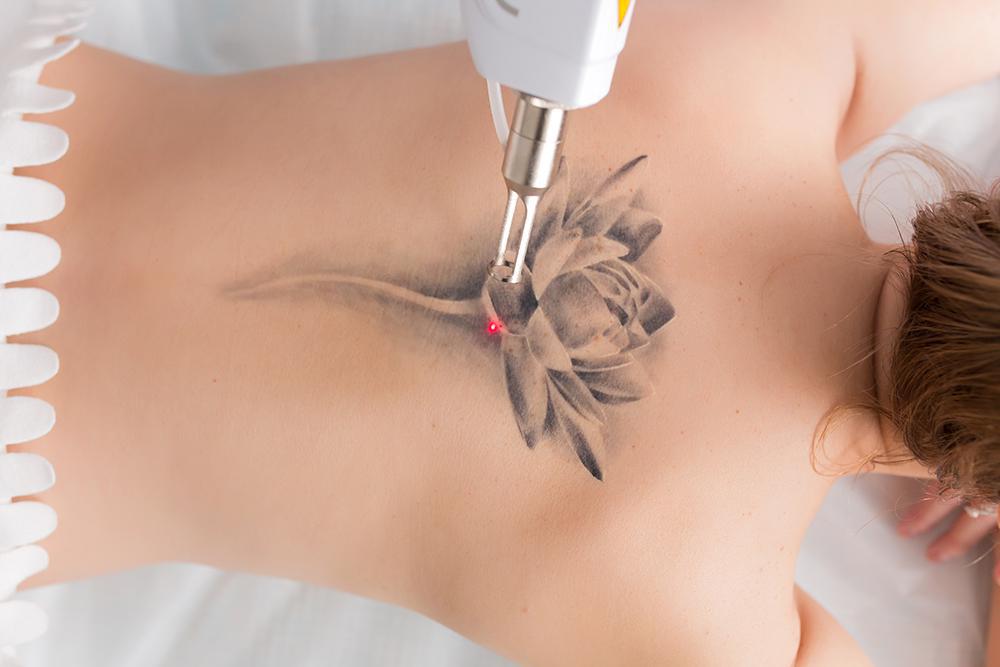
5 Facts About Tattoo Removals You May Not Know About!
Tattoos, a centuries-old practice, are a method to show your personality, personal views, remember an experience, or express yourself creatively. Tattoos, formerly considered a fringe activity reserved for individuals on the periphery of society, have risen in popularity and are now a generally recognised ornament worn by everyone from physicians and judges to bikers and construction workers.
One thing is certain: tattoos are becoming a more accepted societal norm. As a result, the business is expanding, and with it, more people are deciding to erase or cover previous tattoos that may no longer represent who they are, what they enjoy, or what they want to express.
Laser tattoo removal is one of the most used treatments nowadays. Laser tattoo removal technology has advanced significantly over the years, but how does the laser removal procedure work? How much time does it take? What more should you know about it before diving in?
You should have a better notion at the conclusion of this article if tattoo removal will be a good option for your situation and goals.
1. The laser does not actually erase ink from your skin.
When it comes to eliminating ink from your skin, it’s a frequent misperception that the laser performs all of the heavy liftings. In truth, your body spends most of its effort in digesting and removing ink as a waste product.
When you first got your tattoo, the ink was injected into the thick main layer of your skin. While our systems are built to detect and eliminate foreign particles, tattoo ink persists because the pigment particles are too big for our bodies to absorb and destroy.
This is when the laser enters the picture. The laser breaks down the ink and colour molecules into small enough bits for our bodies to absorb and digest. Ink molecules enter the circulation and are processed by your kidneys and liver before being eliminated as natural waste products.
2. Your tattoo may become darker before it fades.
This may seem counterintuitive, but your tattoo may actually darken before vanishing. So don’t be disheartened if your tattoo looks the same or even darker after your first few sessions.
This darkening is perfectly natural and is caused by the way lasers touch the layers and tissue of your skin.
3. Regardless of the size of the tattoo, several laser treatments are necessary to erase it completely.
The answer varies depending on various circumstances, but remember that even the tiniest tattoos will usually need at least three laser sessions to completely erase (with 5 sessions being more common for more minor work). Other factors that might influence how many sessions are needed to remove a tattoo ultimately include:
- the location of the tattoo
- the colours used
- the age of the tattoo
- your skin type
A solid skincare programme in between sessions will ensure the procedure runs smoothly and your skin recovers correctly before your next session.
4. The location of your tattoo will influence its healing duration.
Circulation and blood flow are essential in assisting your body in swiftly eliminating the broken-down pigment particles. As a result, the position of your tattoo influences how fast you’ll notice benefits after your laser treatment.
Tattoos close to the heart on your chest or torso tend to fade faster since they have more excellent circulation. Tattoos on the extremities, such as the hands and feet, take the longest to fade. Don’t be concerned if your hand tattoo appears to be fading slowly; the treatment is effective; the results will just take longer to appear than on other places of the body.
5. Everyone reacts differently to the pain of laser tattoo removal.
One of the most often asked questions about laser tattoo removal is if it hurts. Whether laser tattoo removal is painful, like obtaining a tattoo in the first place, is highly dependent on individual circumstances. Most individuals think that the discomfort is comparable to having a tattoo in the first place, yet the experience is entirely different.


















